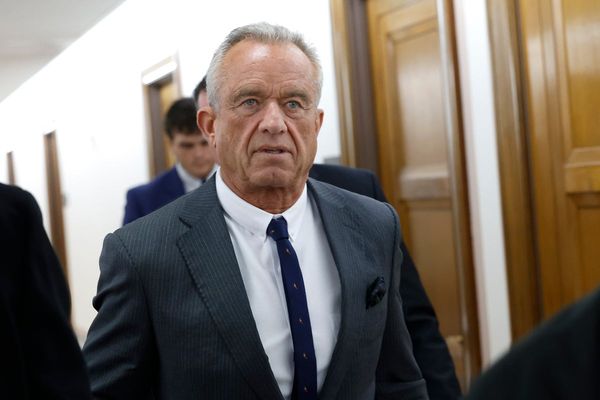
New research has found that nearly a third of the U.S. State Department’s diplomats and professional support staff are considering leaving the department and are actively looking for new jobs, pointing to a crisis of morale and management inside America’s diplomatic corps.
The study, conducted by a team of graduate students at Harvard University’s Kennedy School of Government and released on Friday by the Institute for the Study of Diplomacy at Georgetown University, surveyed nearly 3,000 foreign service officers and foreign service specialists, and found the projected attrition rate was higher than that projected by the State Department and nearly double the share of employees who left the department in 2016.
It follows four years of warnings from current and former diplomats about low morale and allegations of widespread mismanagement at the State Department under President Donald Trump’s administration. But the study also makes clear the problems at the department go beyond the Trump era, pointing to systemic management problems that will hinder the State Department’s ability to recruit and retain talent.
The study was conducted by three future foreign service officers studying at Harvard as part of the Rangel fellowship program, which seeks to promote greater diversity within the ranks of the foreign service. The American Foreign Service Association, the union that represents foreign service officers, was the client for the study. It was overseen by Nicholas Burns, a former senior career diplomat at Harvard University who is reportedly Biden’s top choice to be the next U.S. ambassador to China.
During the Trump administration, State Department morale plunged as senior posts were left empty for months or even years, senior career diplomats were forced out of their jobs, and the department was dragged into heated partisan battles amid Trump’s first impeachment trial centered on withholding military aid to Ukraine.
Between 2017 and 2020, nearly a quarter of senior foreign service officers left, including 60 percent of career ambassadors, the highest rank achievable in the foreign service and the State Department’s equivalent to four-star generals.
But the State Department’s problems don’t start and stop with the Trump administration, as the Harvard study found.
“[W]e were surprised by the startling proportion of officers who indicated they wanted to leave the Foreign Service, and, soon,” said Constanza Castro Zúñiga, one of the report’s authors, in emailed comments. “We expected the leadership of the Trump administration to have motivated some to leave, yet it turned out that there were structural factors just as important that needed to be addressed.”
“[T]he Department considers the morale, wellbeing, and satisfaction of our workforce to be of the highest importance,” State Department spokesperson Ned Price said in an email response. “We are working to strengthen our retention efforts to ensure America continues to lead globally by expanding workplace flexibilities and creating an inclusive, supportive culture where all employees are valued, respected, and able to contribute fully to the mission.”
The report itself, which is titled “The Crisis in the State Department: We are Losing Our Best and We Need to Ask Why,” notes that, “[O]ur survey was conducted after the 2020 election, meaning that officers in our sample were aware of the impending transition and still indicated intention to leave. Data does not support that these increases in attrition were a result of the previous administration alone.”
The survey, taken by some 20 percent of the foreign service, found that the top concerns driving people to leave were related to their families, assignments, promotions, and bias.
Among the perceived drivers of attrition, “bias ranked in the top five for all race and ethnicity classifications. Furthermore, when looking at African American and American Indian officers, bias ranked as the second most important driver for FSO attrition, and fourth most important for Hispanic officers,” the report states.
The report’s analysis of data from the Government Accountability Office shows that between 2003 and 2020 the attrition rate of women and racial and ethnic minorities was roughly on par with that of their white and male counterparts.
The State Department has long been criticized for being too “pale, male, and Yale” and Secretary of State Antony Blinken vowed to make diversity and inclusion a top priority during his tenure. “I will consider it a mark of my success or not during my tenure as secretary whether we’ve been able to put in place a much more sustainable foundation for advancing true diversity at the State Department, to make sure that we have a foreign service and foreign-policy workforce that looks like the country that it represents,” he told lawmakers during a House Foreign Affairs Committee hearing on March 10.
In April, Foreign Policy reported that Blinken appointed career foreign service officer Gina Abercrombie-Winstanley, who previously served as U.S. ambassador to Malta, to the newly created post of chief diversity and inclusion officer, which will report to him directly.
“Resources devoted to improving diversity are wasted if the Department cannot keep Officers in the job over the long term,” the report notes.
The report notes that the loss of highly trained staff carries multiple implications for federal agencies, none of them good. It carries a financial cost, as the time and training invested in personnel is lost, alongside critical institutional knowledge. Beyond the financial cost, there could also be national security implications for the loss of personnel with highly specialized knowledge.
Among the recommendations included in the report are extending leave without pay and remote work policies to limit people being separated from their families, ensuring maximum transparency in the assignment and promotion processes, and empowering Abercrombie-Winstanley to bring about systemic changes within the organization as chief diversity and inclusion officer.







